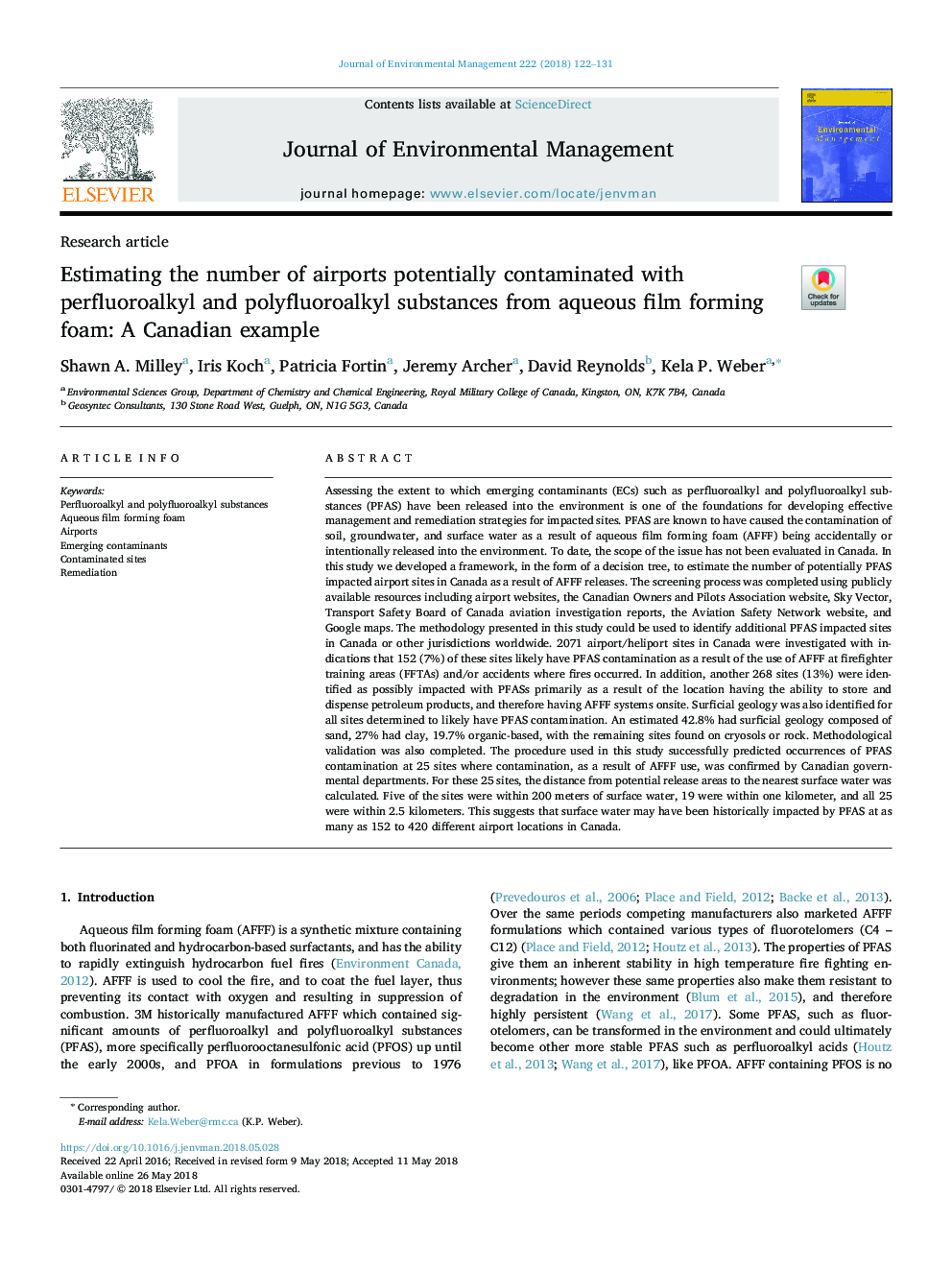| کد مقاله | کد نشریه | سال انتشار | مقاله انگلیسی | نسخه تمام متن |
|---|---|---|---|---|
| 7475999 | 1485196 | 2018 | 10 صفحه PDF | دانلود رایگان |
عنوان انگلیسی مقاله ISI
Estimating the number of airports potentially contaminated with perfluoroalkyl and polyfluoroalkyl substances from aqueous film forming foam: A Canadian example
ترجمه فارسی عنوان
برآورد تعداد فرودگاه هایی که به طور بالقوه آلوده به مواد پرفروفیالکلی و پلی فلوئورا آلکیل از فوم تشکیل دهنده فیلم های آبی هستند: یک نمونه کانادا
دانلود مقاله + سفارش ترجمه
دانلود مقاله ISI انگلیسی
رایگان برای ایرانیان
کلمات کلیدی
مواد پر فلووراکال و پلی فلوکروکوکلی، فوم آبی تشکیل دهنده کف، فرودگاه ها، آلاینده های در حال ظهور، سایت های آلوده، بهبود
موضوعات مرتبط
مهندسی و علوم پایه
مهندسی انرژی
انرژی های تجدید پذیر، توسعه پایدار و محیط زیست
چکیده انگلیسی
Assessing the extent to which emerging contaminants (ECs) such as perfluoroalkyl and polyfluoroalkyl substances (PFAS) have been released into the environment is one of the foundations for developing effective management and remediation strategies for impacted sites. PFAS are known to have caused the contamination of soil, groundwater, and surface water as a result of aqueous film forming foam (AFFF) being accidentally or intentionally released into the environment. To date, the scope of the issue has not been evaluated in Canada. In this study we developed a framework, in the form of a decision tree, to estimate the number of potentially PFAS impacted airport sites in Canada as a result of AFFF releases. The screening process was completed using publicly available resources including airport websites, the Canadian Owners and Pilots Association website, Sky Vector, Transport Safety Board of Canada aviation investigation reports, the Aviation Safety Network website, and Google maps. The methodology presented in this study could be used to identify additional PFAS impacted sites in Canada or other jurisdictions worldwide. 2071 airport/heliport sites in Canada were investigated with indications that 152 (7%) of these sites likely have PFAS contamination as a result of the use of AFFF at firefighter training areas (FFTAs) and/or accidents where fires occurred. In addition, another 268 sites (13%) were identified as possibly impacted with PFASs primarily as a result of the location having the ability to store and dispense petroleum products, and therefore having AFFF systems onsite. Surficial geology was also identified for all sites determined to likely have PFAS contamination. An estimated 42.8% had surficial geology composed of sand, 27% had clay, 19.7% organic-based, with the remaining sites found on cryosols or rock. Methodological validation was also completed. The procedure used in this study successfully predicted occurrences of PFAS contamination at 25 sites where contamination, as a result of AFFF use, was confirmed by Canadian governmental departments. For these 25 sites, the distance from potential release areas to the nearest surface water was calculated. Five of the sites were within 200 meters of surface water, 19 were within one kilometer, and all 25 were within 2.5 kilometers. This suggests that surface water may have been historically impacted by PFAS at as many as 152 to 420 different airport locations in Canada.
ناشر
Database: Elsevier - ScienceDirect (ساینس دایرکت)
Journal: Journal of Environmental Management - Volume 222, 15 September 2018, Pages 122-131
Journal: Journal of Environmental Management - Volume 222, 15 September 2018, Pages 122-131
نویسندگان
Shawn A. Milley, Iris Koch, Patricia Fortin, Jeremy Archer, David Reynolds, Kela P. Weber,
